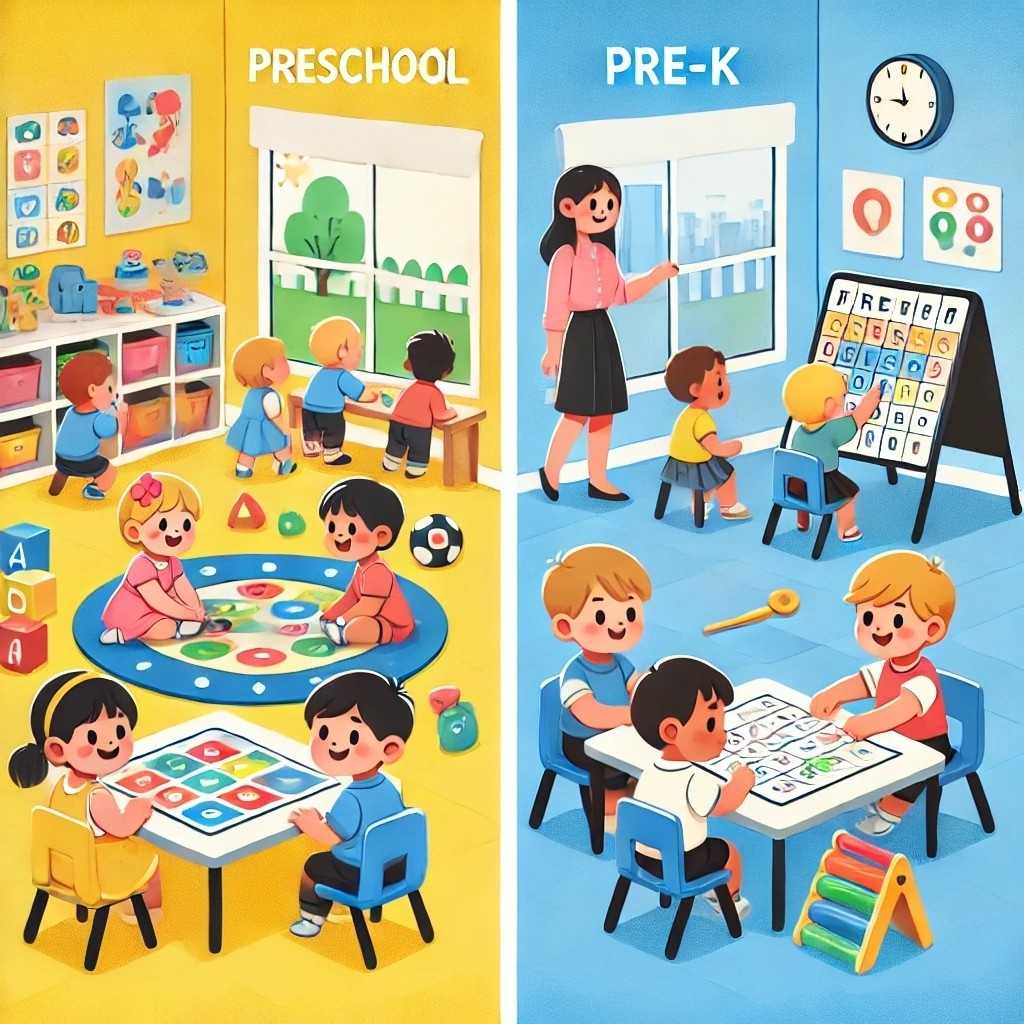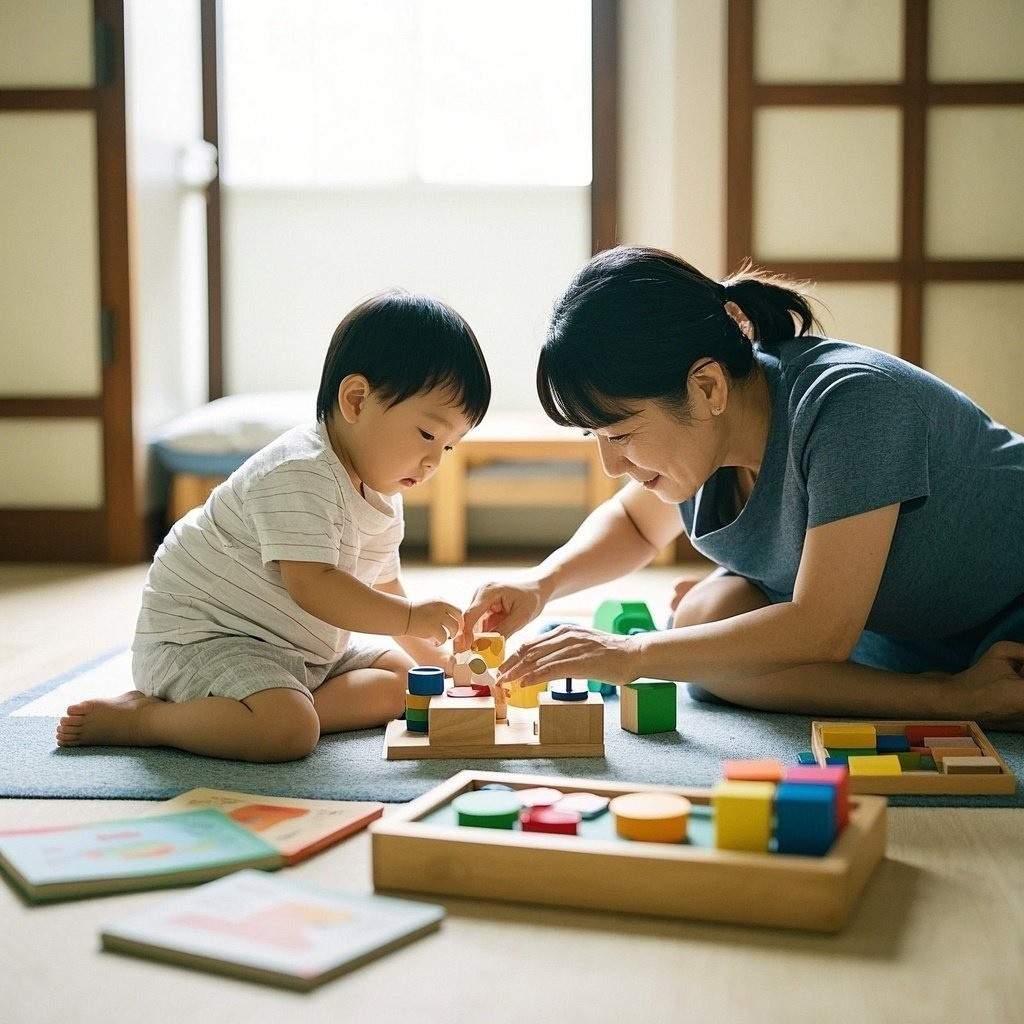In the early years of a child’s life, learning comes naturally through play, curiosity, and exploration. Introducing STEM—science, technology, engineering, and math—during this crucial stage can lay a powerful foundation for a lifelong love of learning. Fortunately, you don’t need expensive kits or complex tools to begin. With simple, engaging activities, you can introduce the exciting world of STEM to preschoolers right at home or in the classroom.
This guide will walk you through the benefits of early STEM education, how to make it developmentally appropriate, and offer easy, hands-on activities to spark your child’s imagination.
Why Introduce STEM in Preschool?
You might be wondering if STEM is too advanced for preschoolers. But when we break it down, STEM is all about asking questions, exploring, and trying new things—all natural behaviors for young children.
The Benefits of STEM in Early Childhood:
- Enhances Problem-Solving Skills
STEM activities encourage children to ask “why” and “how.” This type of inquiry builds critical thinking from an early age. - Builds a Growth Mindset
When children experiment and try again after something doesn’t work, they learn that mistakes are part of learning—a cornerstone of resilience and growth. - Develops Cognitive and Motor Skills
From counting objects to stacking blocks, STEM strengthens early math and fine motor skills. - Fosters Curiosity and Creativity
Simple STEM activities allow children to be inventors, scientists, and builders—exploring how the world works through their own lens. - Prepares for Future Academic Success
Research shows that early STEM education can significantly influence later achievement in school, especially in math and science.
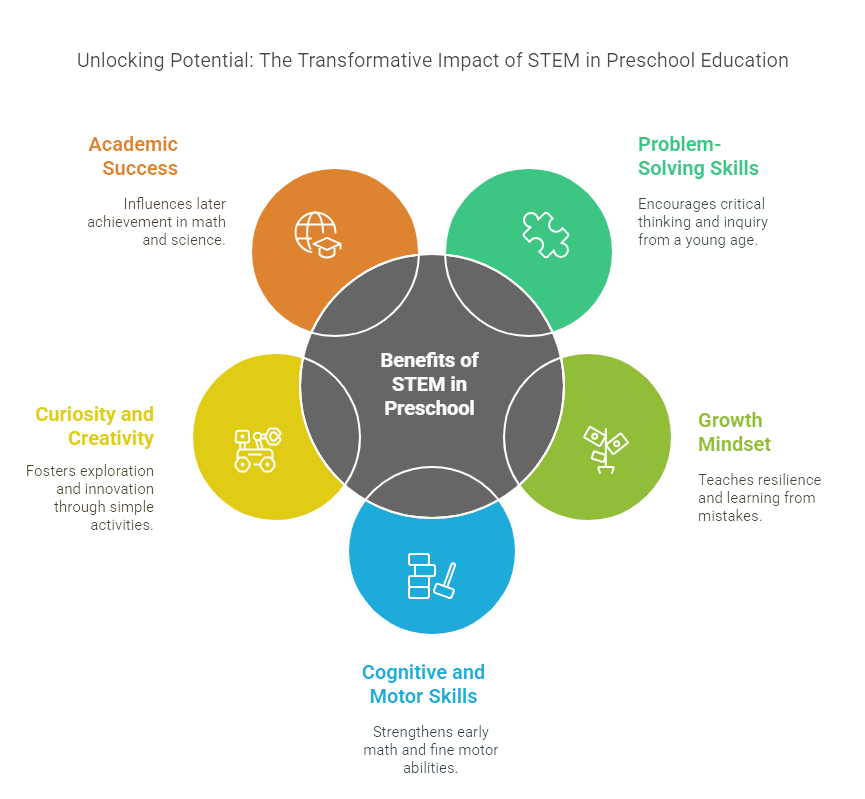
Key Principles for Teaching STEM to Preschoolers
When introducing STEM to young children, it’s important to keep it age-appropriate and centered around hands-on learning. Here are a few essential tips:
1. Keep It Play-Based
At this age, learning through play is the most effective approach. STEM can and should be fun—filled with opportunities to build, create, and discover.
2. Use Everyday Materials
You don’t need fancy gadgets to teach STEM. Simple items like cups, paper, buttons, and sponges can become tools for learning.
3. Let Curiosity Lead
Follow your child’s interests. If they love water, try science experiments with ice or bubbles. If they enjoy building, offer blocks or recyclables to construct with.
4. Focus on the Process, Not the Product
STEM learning is about trying, testing, and tweaking. Celebrate the journey of discovery instead of aiming for perfect results.
5. Encourage Open-Ended Exploration
Ask questions like “What do you think will happen?” or “Can you find another way?” to spark deeper thinking and creativity.

Simple STEM Activities to Get Started
Ready to dive in? Here are five simple and engaging STEM activities to try with your preschooler. Each one is designed to be playful, educational, and easy to set up.
1. Sink or Float Experiment
Focus Area: Science
Objective: Help children understand buoyancy and prediction.
Materials:
- A clear bowl or tub of water
- A mix of household objects (spoon, leaf, plastic toy, rock, crayon)
Instructions:
- Show your child each object and ask them to guess if it will sink or float.
- Let them test each one in the water.
- Discuss what they observe and why some things sink while others float.
STEM Skills Developed: Observation, hypothesis testing, categorization
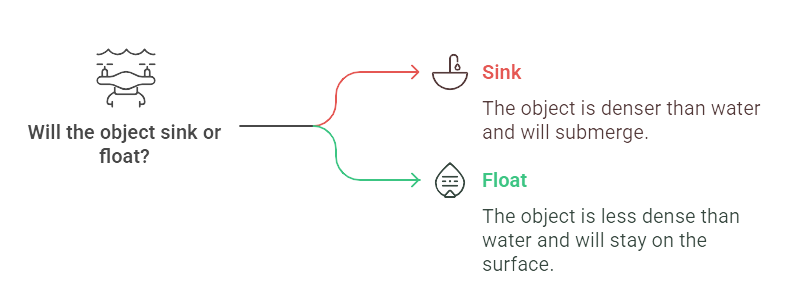
2. Build a Bridge with Blocks
Focus Area: Engineering
Objective: Teach balance and structure through building.
Materials:
- Wooden blocks, LEGO, or recyclables (paper towel rolls, cardboard)
- A small toy car
Instructions:
- Challenge your child to build a bridge strong enough for the toy car to cross.
- Offer different materials and test which ones are strongest.
- Ask them how they can improve the design to make it longer or sturdier.
STEM Skills Developed: Structural design, problem-solving, experimentation
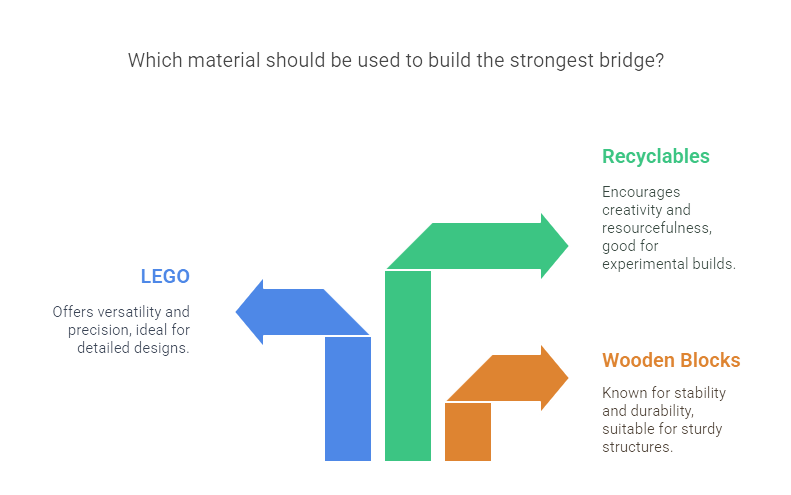
3. Button Sorting and Counting Game
Focus Area: Math
Objective: Develop early math concepts through sorting and patterns.
Materials:
- A collection of buttons or other small items
- Muffin tin or cups for sorting
Instructions:
- Have your child sort buttons by color, size, or shape.
- Count how many are in each group.
- Create and extend simple patterns (e.g., red-blue-red-blue).
STEM Skills Developed: Classification, pattern recognition, counting
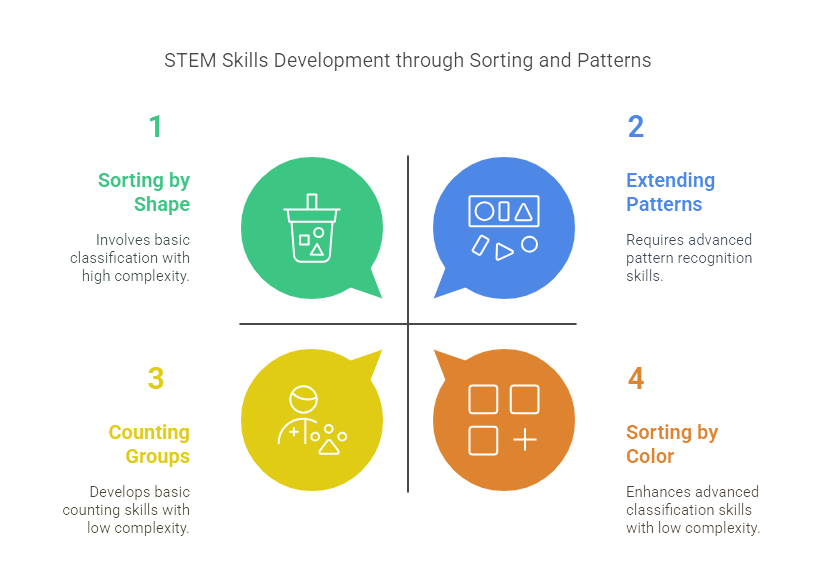
4. Screen-Free Coding with Arrows
Focus Area: Technology
Objective: Introduce basic coding logic and sequencing.
Materials:
- Paper arrows (up, down, left, right)
- A toy and a simple grid path made from tape on the floor
Instructions:
- Place the toy at the starting point.
- Use arrows to plan the toy’s path to a target (like a stuffed animal or goal).
- Let your child lay out the correct sequence and test it.
STEM Skills Developed: Sequencing, logic, directionality
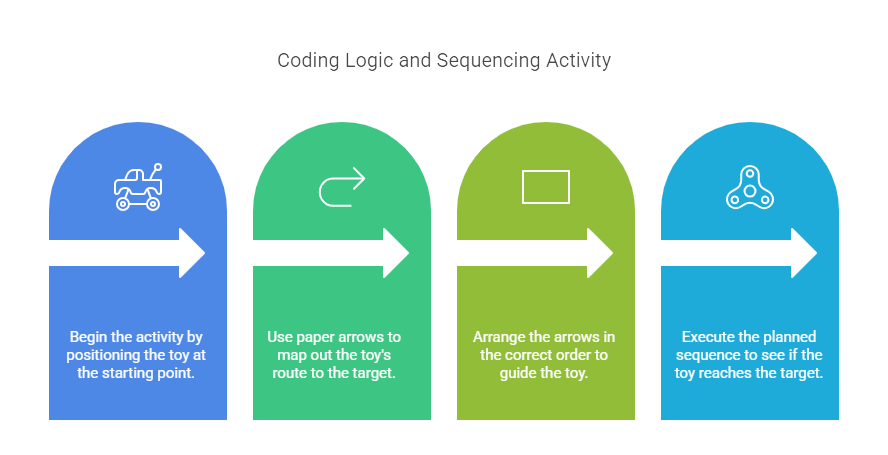
5. Water Transfer Challenge
Focus Area: Science & Motor Skills
Objective: Explore volume, absorption, and cause-effect while building fine motor strength.
Materials:
- Two bowls
- Sponge, turkey baster, or plastic pipette
- Water
Instructions:
- Fill one bowl with water and leave the other empty.
- Challenge your child to move water from one bowl to the other using the sponge or baster.
- Time it for fun or see how many transfers it takes to fill the second bowl.
STEM Skills Developed: Volume recognition, experimentation, motor control
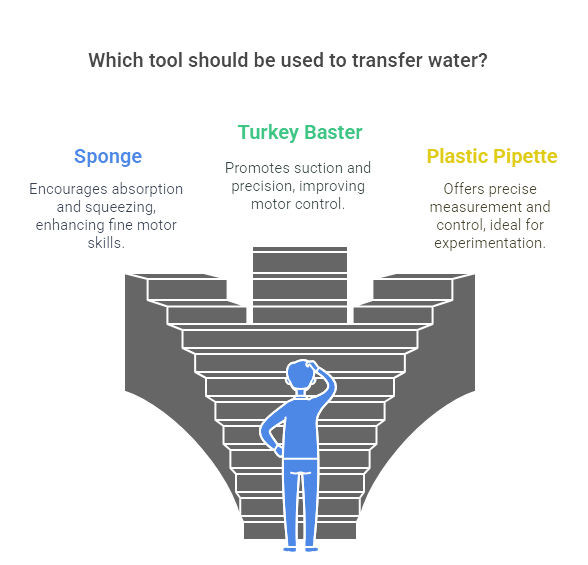
Tips for Parents and Educators
Whether you’re a teacher or a parent, you can make STEM in early childhood feel natural and exciting. Here are a few final tips to enhance the learning experience:
- Celebrate Mistakes: Let children know that failure is part of discovery.
- Ask Open-Ended Questions: Replace “Did you like it?” with “What would you do differently next time?”
- Document the Experience: Take photos or have kids draw what they did—it helps them reflect and remember.
- Incorporate STEM into Routines: Count snacks at snack time, measure ingredients when cooking, or observe nature during walks.
- Repeat and Build On Activities: The more kids repeat an activity, the deeper their understanding becomes.
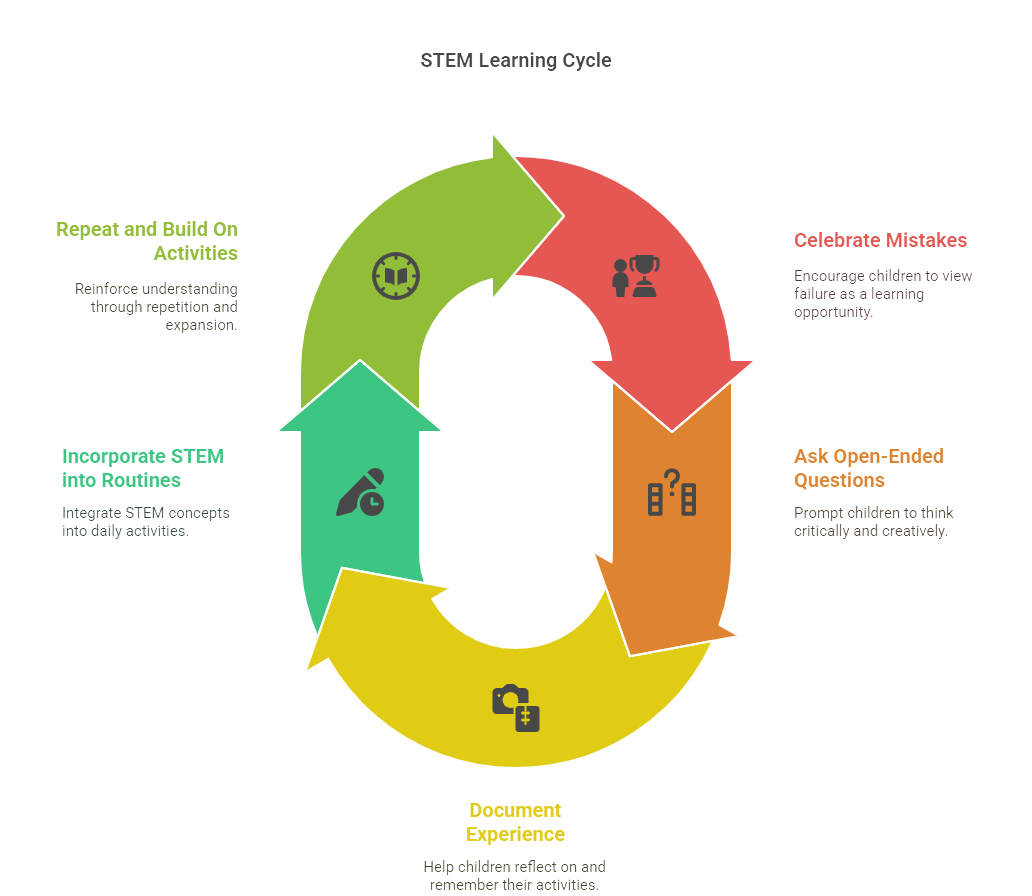
Conclusion
Introducing STEM to preschoolers doesn’t have to be complicated. With just a few simple materials and a spirit of play, you can foster a love of learning that will stay with your child for years to come. Through simple STEM activities, preschoolers build skills in science, math, engineering, and technology in ways that are developmentally appropriate and joyfully engaging.
Remember: it’s not about creating future scientists overnight—it’s about nurturing curiosity, building confidence, and celebrating the wonder of discovery.
So go ahead—explore, build, sort, ask questions, and most importantly, have fun. The world of STEM is right at your fingertips, and it all starts with one small step…and maybe a bucket of water or a handful of buttons.


